The Ministry of Defence has indicated that it remains open to potentially retrofitting the Royal Navy’s Queen Elizabeth-class aircraft carriers with catapults, depending on future operational requirements.
This follows a parliamentary question from Conservative MP Ben Obese-Jecty, who inquired about the possibility of converting the UK’s two aircraft carriers to CATOBAR configuration.
Defence Minister Maria Eagle clarified that while the carriers currently operate the F-35B Lightning fighter aircraft, which does not require catapults or arrestor systems, future advancements in naval aviation might necessitate such modifications.
“The Queen Elizabeth Class aircraft carriers operate the F-35B Lightning fighter aircraft, which does not require Aircraft Launch and Recovery Equipment. The Royal Navy’s Maritime Aviation Transformation Strategy will expand the deployment of uncrewed air systems in Royal Navy ships, including the aircraft carriers,” said Eagle.
This is not the first time that the issue of converting the UK’s carriers has been raised. In 2024, when James Cartlidge was serving as Minister of State for Defence, he addressed similar questions from Conservative MP Damien Moore. Cartlidge highlighted that the carriers were designed with the potential for future modifications, stating:
“The Queen Elizabeth Class Aircraft Carriers (QEC) were built to allow for capability changes over the lifetime of these ships. The Royal Navy is committed to developing capabilities that will allow it to build combat mass, whilst remaining at the forefront of technology, and this includes a strong focus on uncrewed air systems.”
Cartlidge further explained that the Royal Navy was conducting a detailed analysis to explore the operation of a wider range of aircraft from the carriers. This included considering launch and recovery systems, particularly after successful trials of the Mojave and Windracer uncrewed systems.
“As such, the aviation capabilities of the QEC aircraft carriers will continue to evolve in the coming years and the operation of a wider variety of aircraft is being considered as part of a detailed analysis to scope and assess options. The launch and recovery systems for these new capabilities is currently under review, following the recent successful trials of Mojave and Windracer,” he added.
Adding to this context, recent trials have showcased the increasing integration of uncrewed aerial vehicles (UAVs) with the Royal Navy’s carrier operations. Recently, the Royal Navy conducted a groundbreaking trial with the largest uncrewed aircraft ever launched from a Royal Navy carrier.
Codenamed ‘Mojave’, the aircraft was remotely piloted from a computer terminal and successfully took off and landed on HMS Prince of Wales off the East Coast of the USA. The aircraft, measuring nine metres long with a 17-metre wingspan, is significantly larger than the F-35B Lightning.
The trial, conducted off the coast of Virginia, marked the first time a crewless aircraft of this size has been operated from a non-US Navy carrier, demonstrating how uncrewed systems could work alongside fifth-generation fighters.
The Ministry of Defence remains cautious yet open to innovation. Eagle said that any decision regarding carrier modifications would be carefully considered within the context of the Strategic Defence Review.
“The Strategic Defence Review will consider opportunities for modernisation and transformation, and greater productivity, including through the rapid and consistent application of Digital Age technologies.
As new technologies develop, it is possible that some uncrewed systems would require specific Aircraft Launch and Recovery Equipment. Should this become the case, balance of investment decisions would be made to ensure that the Royal Navy is optimised to gain the most benefit from uncrewed systems,” Eagle stated.
While no definitive commitment has been made to retrofit the carriers with catapults and arrestor gear, the Ministry’s response indicates that the possibility remains on the table. The evolving landscape of naval aviation, particularly the integration of uncrewed systems, will likely shape future decisions on carrier upgrades.


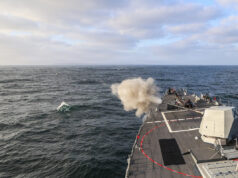
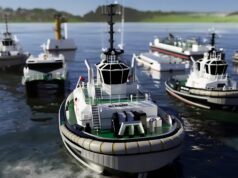
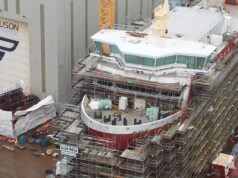
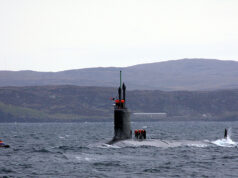
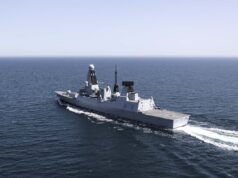

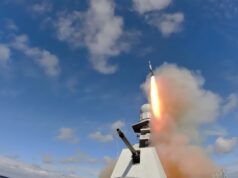
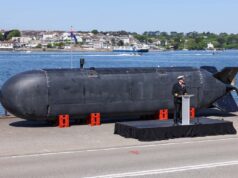
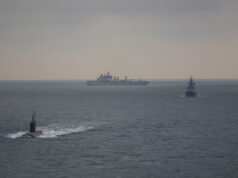
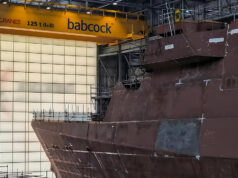

Could Tempest be a candidate? There is development time to make the airframe capable, one would think? Before the OSD these two vessels will undergo several refits as technology expands using remote unmanned systems and who knows 95% of aircraft on board could be unmanned by 2050?
Are you proposing making Tempest SToVL capable?
If so, that would be suicide for the GCAP, quite frankly. Neither Japan nor Italy have expressed any desire for that capability. It would be expensive, time-consuming, performance-limiting and quite frankly wasteful when considering that the F-35B is currently the second-most capable carrier-borne fighter currently in service and is likely to remain similarly dominant in the near future against all but one potential opponent: China.
I suspect he means if Cats and Traps were fitted. Either way it’s just not going to happen the Tempest is likely to be near F111 size and it would be easier and far cheaper and practical to go for F-35C with only a relatively negligible disparity in ability.
Not sure what you are suggesting here …That Tempest will only have a negligible increase in capability over F35C? Or that F35C only has a negligible increase in capability over the F35B?
Having the capability does not mean permanently stationing on the carriers and folding wings would be part of the specifications.
Unmanned is the name of the game in the future. I am sure the carriers will need to increasingly need to be adapted to operate a whole array of unmanned kit but will traditional cats and traps be required – I doubt it. Alternative methods will be used I’m sure maybe lots of different types. We will see.
The Americans did operate Vigilantes off their carriers with no problems. The Vigilante was pretty close to a F111 in size and weight
Its an interesting question. Maybe the Japanese would take the lead on this being Pacifico-centric.
The area of strike intervention of a Tempest-carrier would be eye wateringly large. That range and payload would give a huge advantage if you think about it.
No! Making it capable of taking off with ‘cats’, this might require an angled deck similar to the Ford class. As I suggested, the QE Class will no doubt undergo many physical changes during their lifespan. A ship-launched version would have to be developed for Tempest, but in combination with F-35B would make for a formidable capability. Any such development would probably come after RAF deliveries.
Fitting CATOBAR would be expensive and also wasteful. The QE-class in their current form are sufficient. Any major upgrades would be unnecessary given there are far more important challenges in the RN that require funding.
Again, the F-35B already offers a full spectrum capability against the majority of threats. Tempest wouldn’t bring anything new, and would be very expensive. Better to save them for the RAF.
Say we had to fight our own midway tomorrow, what is the preferred anti-ship weapon for F-35B?
Full spectrum? Far from it.
The Spear-3 will be the ASM for the F-35B. Additionally, I said ‘full spectrum against the majority of threats’.
Also, your argument is moot in this context, as even if the Spear-3 is not available for use currently, neither would the carrriers had they undergone a large CATOBAR refit.
Purchase 50 F335C and let the FAA operate them and give the F35B to the RAF.
Totally agree. The F-35B will the give the RAF resilience when conventional runways are compromised.
Whats bizarre is that is the very decision that was meant to have been made in 2004. Except the number was to be at least 60 ‘C’s if the 2004 decision was go catobar.
🤣
The Royal Navy does not have the budget to operate a fleet of fast jets alone.
I think I read somewhere there’s a F35D variant in the work. A beefed up F35C. The single engine must be a limiting fsctor over twins for extra zip. Not sure if a pilot less F35B type AEW drone might be doable?
That would be a totally new plane as all the core structural elements have fittings, fastenings and voids for only one engine.
I doubt there is fuselage space for two engines.
The next question is why?
The limiting factor is weight not thrust unless DEW is what you are talking about?
Sounds like a plan 👍
So, purchasing 50x F-35C will cost around £5 billion.
Reconfiguring the carriers to CATOBAR would easily cost at least £1 billion per ship, if not more. So that’s a £7 billion cost to get a slight improvement on the status quo, albeit with greater options for AEW aircraft.
What do you propose to cut in order to fund this? Are you also willing to accept each carrier being out of commission for several years to complete this work?
In addition to this, operational costs would increase: the F-35C pilots would need to fly a lot more to remain carrier-qualified, increasing our reliance on the US – as France does, operates off US carriers just to keep qualified. Plus, the number of ship’s crew would have to increase significantly as well. US carriers have total combined crew/aircrew of over 5,000 per ship. Ours wouldn’t be that high but can the carriers support, say, even 500 extra personnel on a permanent basis? Are there even that many bunks, space in galleys, storage space for the additional food required etc?
If we were back in 2012, with knowledge of the world as it is today, then yes; go for CATOBAR and then purchase F-35Cs for the FAA and F-35As for the RAF, but we can’t do that. We’ve made the choices we’ve made; the carriers are built and they’re STVOL, the planes operating from them are the F-35B, for better or worse.
Going back to change it all now would be hugely expensive and time-consuming. We have to go forward instead, make the best out of the ships we have. This will require innovation – which is something we as a country are very good at.
Tempest as it stands looks like it’s going to be a huge missile truck, which would mean totally unsuitable for carrier operations due to weight
Once you start building a plane capenle of using cats and traps it needs to be strengthened, becomes heavier and often requires a redesigned wing, the cost goes up considerably. This would put off Tempest customers and the requirement would not ne used by Japan or Italy with it current carriers. So to try and make a carrier capable Tempest would be a terrible idea. The F35C is only marginally more capable then the F35B. Not worth the expense of cats and traps just for that. The MoD would do better to buy more F35B and fit a few small cats for drones etc. adding more F35s is the most cost effective way of adding capability both for the FAA and RAF. A cat on the carrier would be useful for launching heavy drone tankers.
One of the main roles, I still say, for Tempest should be as a long-range interceptor fighter. Mabey the Canadians would be interested in it then to cover the high arctic. STOL would stuff that. UK needs a Buccaneer replacement, but as STOL 🙂
A discussion about launch and recovery systems, and the only aircraft mentioned don’t need any?
Just buy MQ9B STOL already, for a truly useful NATO carrier group!
They’ll probably bottle it and use existing Protector.
This government have bought zilch of note so far.
I don’t think the Protector we have now can be converted for carrier duties.
They could be converted into MPAs, and I think that would be a good idea, but I think you have to build the drones so that the wings can be swapped out.
The GA-ASI slideshow I’ve seen implied that the STOL airframe is based off the modifications we have made to our own Protectors, so a further order ought to be hassle-free from a design point of view.
Ah OK.
Hope then!
Yes I thought it was simply a wing kit that GA were offering that would allow MQ9 B to operate in STOL mode from a carrier.
Along with JPALS so that they can land automatically on the carriers.
I don’t know what the wing root attachments are like, it may be that you can retrofit the STOL kits.
You’re right.
I don’t understand why they aren’t already testing out MQ9B STOL. It must be a prime candidate for a number of carrier-borne roles, including a possible replacement for the Merlin CROWSNEST, long-range surveillance and deploying sonobuoys over a wide area. I’m sure someone is going to point out the problems of landing one safely in adverse weather with other aircraft on deck, but that’s what trials are for.
We were first in testing! then nothing. Mojave should be on board by now, get GA to make them in the UK as well. Never seem to be able to pull the trigger and commit – it is always “research”. Why is shipborne rolling vertical landing not standard by now we first tested it in 2018! Same for S100s on all of our escorts to give us further sensor reach etc etc.
They’ve just (this week) started wind tunnel testing on Protector with the STOL wing and tail kit, so progress is being made.
Mojave was never going to be operational from ships, it was simply to test the unarrested landings. UK production would be great, but unlikely as the US buy the vast majority of GA-ASI’s products.
Worth noting as well that the MoD just put out a request to industry on COTS drone capability to provide AEW. This is all pretty new.
Yes, we discussed the new AEW options and the MoD RFI quite extensively on another forum.
Consensus was that Protector is the clear frontrunner, albeit flawed, but Airlander is the novelty option with some important advantages.
We’re not testing it because it doesn’t actually exist yet. They’ve only just started doing wind model testing of the MQ-9B STOL kit in the US. Mojave STOL, which was tested on PWLS, is based off a Grey Eagle airframe, which in itself is based on Predator which is smaller than Reaper, let alone Protector. It was a proof of concept that will now be applied to both the mid-sized MQ-9 Reaper and the bigger MQ-9B Protector.
Ah, I didn’t realise – I assumed they had already had a working prototype. How naive of me.
There’s still no such thing as MQ-9B STOL. It’s still an advert, and it’s ability to lift payload off a carrier could well be far more limited than the print on the glossy.
It’s a wind tunnel model now, and that data will tell GA a lot about the viability of the design, which has actually been evolving behind the scenes as it becomes more concrete. Most visibly, the early images had straight wings as shown in the header image, but some of the more recent CGI (Navy Lookout article on Gambit CCA) has winglets on the ends of the STOL folding wings.
A radar (130kg), a pair of sonobuoy launchers (let’s say 400kg each) and a pair of torpedoes (300kg each) won’t come close to the 2100kg max payload of the SeaGuardian land based version, so I think we’re safe with regards to payload. The sacrifice is in endurance, with draggier wing cutting it from 30 hours to about 24.
You also need to factor on payload the length of runway both for takeoff and landing. Will the drone be robust enough to use the ramp at take-off speed, when strengthening the undercarriage will also take away payload. If it can’t do that, the length of a diagonal runway on a QEC carrier, even with additional sponsons, will be far less than say the main runway on the Americas class. And there’s no comparison between the payload that can be lifted using a 1.5km land-based runway and 210m of flight deck (even shorter before a rebuild).
Obviously there’s trade off between fuel weight, payload and duration as well, and I don’t think we can be at all confident at how much it will lift. We need to wait (for the weight). However, I’d be willing to wager that 24 hours will be a vast overestimate for that 1.5 tonne payload you mention. If it can get that much off the deck at all I’d be impressed.
Let’s do some very finger in the air equations. Lets assume constant power equals constant acceleration, and that lift is proportional to v^2 and to 2as. So ignoring drag and wind over deck, total lift would be proportional to the length of the runway. That includes over two tons of empty weight as a constant, plus maybe two tons of fuel. So you can see why taking off from a fraction of the length of a land runway will be problematic, no matter what they do with the wings to increase the lift. Wind over deck will help and when you include drag in the calculations it’s not quite as bad as I painted it. Nevertheless, I’ll wait and see what the real engineers can do.
Never happen.
We are skint
Yet again we see the fantastic adaptability of these incredible Carriers, has anyone ever wondered if C&T’s could have been fitted originally ?
“Jeese I crack myself up”.
Britain is sinking under the weight of unread ‘Strategic Defence Reviews.’
What is needed is a tactical review of how Britain will win a fight battles on its own. And if the aircraft carriers are not part of that plan, get rid. If they need catapults get them.
The 1990s are long over. We are back to a world where the weak and timid get attacked by enemies or dominated by ‘friends.’
If we are buying a ‘suitable’ STOL airframe then why the Cats and Traps? My understanding is that there is a STOL kit that General Atomics are offering that would not require any modifications to the QEC, although I vaguely remember some talk about issues with the drone sharing the flight deck with the F-35 during flying operations? Even so, given the expense of cats and traps relying on EMALS tech then surely the main driver for Cats and Traps is high performance loyal wingmen drones for the F-35B and they are apparently some way off as yet.
I read a headline on a US website (The War Zone, possibly) that said the biggest problem with loyal wingmen drones was that they still had a tendency to fly into the crewed aircraft in close formation! (I didn’t get read the article). The picture on the article showed the F-35 flying aft of the drone, so I guess there may yet be serious issues to be sorted with the not so intelligent AI pilots. In which case there is currently limited requirement for cats and traps at the moment so I don’t expect any decisions about drones or cats and traps for QEC given the caution that MoD is applying to big procurement decisions.
Cheers CR
It’s not the fighter aircraft that is the main requirement for CATOBAR. It is the support aircraft that are the force multipliers, i.e. an air to air refuelling tanker and an AEW platform. Having only a ski ramp, limits the type of aircraft that can be launched, but without a barrier/wire trap, you will be also limited on how the aircraft is recovered. In essence you will be limited to helicopters, tilt-rotor, or compound aircraft. It would be possible to design a lift jet type aircraft, much like the Dornier Do31 prototype. However, it will have its limitations due to the max-all up weight it can take-off/recover with, which determines its range, duration on station and cruise altitude. This becomes especially important if it could only do VTOL and STOVL (STOVRL). The other key issue with a Do31 type of aircraft is the aircraft numbers being purchased/built, as this will dictate its price.
The two off the shelf contenders for a respectable AEW platform are the V22 and V280, as the carrier won’t need any modifications to handle them. Plus as the US uses the V22 in great numbers and is looking to replace the US Army Blackhawk fleet with the V280, their price point relative to the AW609 for example, should be much cheaper. However, if the RN do go ahead with the proposed request for information on the “medium” weight CATOBAR. Then the Boeing MQ25 Stingray would fit the requirements not only the tanker role, but also as a possible AEW platform. But to operate this aircraft, the carriers would need modification, to include an angled deck along with the CATPOBAR system. But why stop at a medium weight? Going for a fully capable CATOBAR would allow significantly heavier aircraft to be operated. Plus it would give the US and France the ability to operate traditional fixed wing aircraft from the carrier.
The US marines are reducing their buy from 353 to 280 for reliability issues. Regardless of these reliability issues, this will increase the unit cost of the F-35B. This will change the econimics of the F-35B for the UK. This in turn will also alter the cost calaculations of installing emal catapult system.
Surely it makes sense to accept the decision not to install a catapult on the QE carriers was wrong. And before any more money is spent on a “dead end” policy, instal cats ASAP. The one redeeming factor I believe is the carriers have a “fitted for not with” design to accept catapults.
Unfortunately I believe that belief is incorrect. My understanding is the original design requirement -post F35B decision – was to allow for retro fitting of CATS for aircraft. However at some point in the design cycle that particular requirement was ‘missed’ and subsequent designs did not allow for CATS to be retro fitted. But I could be wrong as it was a very convoluted project.
The QE design was built to be capable of being adapted for US Cats and Traps, however those were the older Steam Catapults and Traps used by the Nimitz class and CDG. Unfortunately when Cameloone and Odborne decided in 2010 to ditch the F35B and go for the C they opted for the new AAG and EMAL designed for them Ford class. QE was too near to. completing and it was decided to mod PofW to take them, the USN even allowed the RN to jump the queue and allocated the 2nd production set for her.
Then when they got into the design stage they hit very expensive issues as the new kit works completely differently to the old ones. The cost rocketed and in 2012 they did a very sharp about face.
The rest is History !
But what I’ve never found out is how they were going to generate the Steam to power the originally planned steam Catapults when they can’t even keep the showers working.🤷🏼♂️
Or perhaps a very effective fix to the cold showers could be developed simply by plugging the steam generator into the plumbing!
There was never any plan for steam catapults on QEC.
There was a UK electronic catapult EMCAT that was taken to test/demonstrator stage.
Was it GEC (or some subsidiary) that developed it – and was that the one that was sold off to the Yanks?…I remember reading something about that a few years ago when this topic came up previously ?+.
Nothing to do with reliability. Reassessed operational needs led to a switch of some planned Bs to Cs. Remember, they will operate off two different types of ships- Bs from the assault ships, Cs from the carriers. Only the USN is buying the F35C. It is likely there will be further users of F35B as other countries seek to have seaborne airpower at an affordable ( relatively) cost.
Peter, the USMC is also buying C’s but fly them off USN carriers.
Wrong. The USMC in their Aviation Plan are reducing their F35B purchase, and increasing their F35B purchase, because they are changing to more carrier based deployments rather than from assault ships. The F35C is used from carriers, the F35B is used from their assault ships. Hence the order change.
Clearly the correct thing to do would be to make sure the Tempest was carrier capable from entry to service. The French have had a huge success with the Rafale by making sure it can operate from carriers. Making the Tempest carrier capable by design will maximise the return on the UK’s investment just as the French have found with the Rafale. It is about time the UK defence establishment admitted the whole F35/QE carrier program has been a fiasco largely due to the insistence on the F35b (or C) as the aircraft of choice. Cut the losses, get a few Sea Harriers back on deck to keep the RN familiar with fixed wing operations whilst developing the Tempest to be carrier capable and fitting CATS and TRAPS on the two carriers with the necessary extra MT30 gas turbine for more power and speed. Stop messing about. Consider cutting RAF strike to pay for the naval Tempest. And use a few reconditioned Buccaneers to keep the RN trained in CAT and TRAP operations before the naval Tempest enters service. Grow a pair!
😂🤣😂
Tempest will not be carrier capable. Neither Japan nor Italy want that addition, and it’s essentially useless for any foreign sale of the jet.
Changing the requirement to suit that at this stage would significantly delay the programme. Similar things happened with the Typhoon, and are currently ongoing within FCAS.
The Rafale’s success is nothing to do with its carrier capability. Only India and France require that – the reason Rafale is so successful is because of geopolitical considerations.
Buccaneers? WTF?
If you think that the Harriers are coming back, quite frankly you’re delusional. Those are ancient, difficult to maintain and would require certification.
The carriers need CATOBAR configuration. We can be rid of Crows Nest and carryout in flight refuelling adding essential range on the F35. The Royal Navy could then launch Loyal Wingman too. It would turn two limited ability carriers into something akin to what the Americans have from an air wing P.O.V.
Does anyone know if Tempest would be able to be carrier-capable?
Tempest will not be carrier capable from the off. It will be tough enough to get any new aircraft operational by 20235.
*2035
Tempest will not be carrier capable. Neither Japan nor Italy want that addition, and it’s essentially useless for any foreign sale of the jet.
Changing the requirement to suit that at this stage would significantly delay the programme. Similar things happened with the Typhoon, and are currently ongoing within FCAS.
The Tempest was not intended to be carrier-capable.
Add supplementary EMALS CATOBAR for operating autonomous heavy weight drones.
Specifically, tanker and AEW&C drones.
Multiple collaborative radar drones orbiting the CSG, stealthy, AESA and IRDA equipped with serious passive chops and LPI Comms
These can stay aloft for days on end using the autonomous tanker drones that also orbit the CSG, keeping radar drones topped up and topping off F35s as they launch.
FULLY autonomous, take off, patrol, obey high level orders and land autonomously.
The radar and tanker fleet will even chat amongst themselves, keeping everybody fueled and on station with the tankers automatically landing, refueling, moving to the hanger while a newly fueled tanker takes off.
It needs to be push-button automatic.
J1M.
I am all for the Royal Navy capping their F35B purchases at 60 units, enough for a single carrier air wing, and then spending the money to convert one of the carriers into a CATOBAR carrier and equipping it with whatever aircraft they deem fit be it the French Rafale M follow-on, the USN F/AXX 6th gen fighter, the upgraded Lockheed 5.5 gen F35C or standard current F35C (Block4 plus) or a navalized Tempest fighter. Note that choice of a USA carrier capable fighter, of which there are likely to be 3 (current F35C, F35C 5.5 gen and F/AXX 6th gen fighter), has to be carefully evaluated in light of the current USA America first policy that downgrades the relationship with its traditional allies, and that includes the UK.
My reason for this approach is because I believe Lockheed and the US Marines are going to be “orphaning” the F35B variant with the forthcoming F35 5.5 gen upgrade after Block 4 upgrade. I think the 5.5 gen iteration will involve an enlarged airframe (Super Hornet style revision), that will remove the STOVL provisions in the current F35 design. The obvious elements of the provision I speak off are the lift fan and engine nozzle plus the wing size and configuration. Lockheed is going to optimize its 5.5 gen upgrade for longer range, larger internal weapons payload, and greater maneuverability/agility and this will mean a larger reconfigured wing for better cruising and carrying fuel in the wing and fuselage, and a new adaptive engine besides new electronic hardware and software changes.
I also think with the F35 5.5 gen upgrades the US marines will abandon the B variant and focus their current strike and ground support requirements around the current C model and the upgraded 5.5 gen C model which will then form the “Low” component of a “High/Low” fighter mix with the “High” element being the F/AXX and the F47 for the USN and USAF respectively. Essentially the same “High/Low” mix they have operated over the past 40 plus years with initially the F15 / F16 mix from the 1970s and later the addition of the F22 (aborted replacement for the F15) in the 2000s for the USAF, and for the USN, with the retirement of the F14, the F18ABC classic Hornet and the F18EFG Super Hornets off the carriers. I therefore see the current F35B design being retained with little or no upgrade after the Block 4 solely for the allied Navies that have selected it for their STOVL carriers, namely the UK, Italy, Japan and South Korea. The US Marines, I believe, will phase their current fleet of F35Bs out over the next 2 decades once Lockheed unveils the 5.5 gen upgrade.
Well I have to say that I have never ever read such a staggeringly well thought out and factually accurate, sensible reply in all my years.
Well done you.
“A magnificent Rose amidst a garden of weeds”.
Ahah, your F35C 5.5 must be the F35D someone else was talking about.
I imagine they’d be working on developing the stealth coatings for operating the F35s at current and future higher speeds for increased durability. Do you know?
If the USMC only go with the F35C, what will they do with their LHDs? They do currently operate the F35C from the Nimitz class carriers alongside the USN F35Cs and F18s. But their Harriers, as much as I love the jet, will be a liability in today’s and tomorrow’s air battles, due to its massive radar cross section. The F35B will remain the only option for them to operate a fixed wing aircraft from their LHDs and it does have a growing market outside of the USMC. So I do see development work for the F35B post Block 4, as the customers will have a desire/demand for it. The engine is the issue, there is not enough internal space for the proposed adaptive engine. Though P&W have stated they could design a derivative of their adaptive engine, that could be made to fit and give a useful thrust upgrade.
The mighty Tangerine has done a Boris with the T32, stating that he wants a twin engined F35. with more range and a bigger internal payload. But has yet to clarify why or for what purpose. Are LM offering this as a next evolution of the F35C in particular, as there has been artwork released which looks very KF21ish? Where LM could be pitching it as a cheaper alternative to the USN’s FA-XX?
With regards to Trump’s announcement on a twin engined iteration of the F35 that he designated as the F55, I think the poor idiot read the Lockheed CEO’s comments on developing the F35 into a 5.5 generation fighter using technologies from their failed 6 gen NGAD bid, and stupid Donald immediately equated it with a new fighter designated as the F55. The less said about this old guy currently running the USA, the better for all of us.
On your other point about the US Marines and what they do with their LHDs which a few years ago they were pushing as mini carriers during the first Trump administration, I believe the Marines are rethinking their use as attack platforms for manned jet. In light of happenings in Ukraine and else where, I am of the opinion that the Marines over the next decade or two while operating and eventually phasing out their F35Bs, will increase focus on using the LHDs platforms as mothership for launching all types of drones, both aerial and waterborne (surface and sub surface). The current trials by the Turks with their LHD I think is a precursor of the evolution of LHD based air attack vehicles. Helicopters will have a role, primarily short range and as drone controllers, while medium and long range attack roles will become the domain of deck launched drones carrying cruise missiles ( subsonic and supersonic), one way kamikaze drones and tube launched missiles of all kinds (subsonic, supersonic, hypersonic and even ballistic missiles)..
In my submission above I forgot to also mention that the new Chinese Type 76 LHD with the emails and arrester system is where I see the US LHDs evolving to become, so that they can launch large drones and recover them.
Idiot
I hope for project ark royal for upgraded (1x90m + 1x70m *prefer other 90M rather 70m) both launch for CCA drone to support F35 same time F35 B launch. I would like see 120m indeed so we can launch other nations aircraft. Even they can fly ramp but arrestor is required to capture aircraft (non-f35B)
I like hybrid STOBAR X CATOBAR x STO-SBRL/VL so more options setting over STO+SBRL/VL at current setting.
So future replacement 3 new CATOBAR Carrier can launch new future Aircraft can launch like f111/vinginate size – 375m size like American size and 3 hybrid drone+helicopter assault well-deck carrier for ampihous.(275m same size currently or to 225m)
So we finally have 3 rotating fleet (1 active / training / reserves (rest) rotate) in 30 years time. These Which royal navy were want rules of 3 since cold war 50s we didn’t success royal navy plan due fund.
I would guess that this is more likely to be used in the support of single-engine unmanned vehicles. There is no money to develop a CATOBAR Tempest. Rafale is yesterdays fighter and the next gen US Naval fighter would be too expensive to buy and operate in the small numbers that UK is likely to purchase. F35 is likely to be the last manned fighter employed by the Royal Navy. UCAVs will be cheaper to buy and operate.
The hate in this forum for the F-35B is misguided. The Lightning is still the second most capable carrier-based fighter in current service. It has a pair of very capable A2A missiles, and will soon receive a third. It has a precision strike capability, and will soon receive a cruise missile.
The USMC is not cutting its order due to issues with the plane, but due to a rebalancing on the assault ship/carrier dynamic. Remember that the B is also operated by Italy and Japan, as well as Singapore.
It is a plane that is good enough. Often, we armchair admirals/chairborne commandos become obsessed with perfection, and seek solutions such as CATOBAR, navalised Tempest, F-35C, and ignore the other priorities and expenses faced by the RN as well as the perfectly serviceable capability offered by the F-35B.
Absolutely agree. The cost of the QEs and their aircraft has put severe strain on RN funding. The even higher cost of building and operating CATOBAR carriers would have exacerbated that pressure. Given the extent to which STOVL operation depends on software( landing is largely automated), it should be possible to design a high performance UCAV to operate in similar fashion; probably no more difficult than the flight control software for CATOBAR operation., and arguably less hazardous.
The UK needs a better AEW solution than Crowsnest. There are several options that wouldn’t involve the expense of fitting an EMAL system. The result of the 2021 RFI has never been made public but it is reasonable to assume likely costs were too high.
Agreed.
F35B with Meteor and Spear will be one hell of a capability and there isn’t anything coming down the road that is going to be an improvement over it from our carriers.
Add in MQ9B using the ski ramp, and we have the ideal carrier for blocking up the North Atlantic against submarines or even scouring the Pacific for surface ships.
The AEW will still be flawed, but the best the RN has ever had.
‘Retrofitting CATOBAR’ can mean either fitting a (relatively small) system to facilitate drone launch and recovery, or a full conversion of the ship to fly something other than jump jets. There was a lot of effort wasted several years ago on studying the potential benefits of abandoning the B variant in favour of the C, based on the premise that CAP could be sustained using (and thus buying) fewer aircraft. The cost of putting EMALS on both ships was not something HMG wanted to accept, so the option being considered was to convert one ship, leading to the kind of part-time capability that the French have. Then it was finally acknowledged that this was a stupid idea, and they went back to the original jump-jet concept anyway.
Bit late now, should of fitted them when both ships were being built, changing it now is expensive and would put one carrier out of action for well over a year etc then all the trials etc. Yes they could use E2 AWAC’s etc but i see no major advantage apart from that. If any thing i’d say give the carriers better fitted defensive more weapons ie longer range air defence.
The problem with CATOBAR, especially the one used by the Ford Class, is that it is only currently cleared to launch and recover F18s and E2 Hawkeyes. They have still yet to clear the F35C. Which would have meant what for the RN and the UK? Basically the option would have been after scrapping the Harriers. That the carriers would either be giant helicopter carriers or we would have to look at purchasing/leasing F18s. As I don’t believe Rafale M is cleared for it either.
Apart from Hawkeyes, the CATOBAR would also allow for a heavier design of tanker aircraft. Both of which as force multipliers are significantly more important than the carriers organic defences.
It’s about time we evaluated the Turkish drones, specifically the MIUS/Kizilelma series, alongside Rolls Royce and Leonardo. Even the current MIUS A has a payload of 1.5 tonnes and it’s designed from scratch to take off from and land on a ramped carrier. It could well prove the basis for a collaborative combat drone and a better AESA platform than Crowsnest.
If RN go back to catapults best bet is F35c , what other options are there . Very much doubt it’s going to be F18s or Rafale ,has one poster said F35B hand over to the RAF. RN purchase F35c there again it’s just all talk at the moment has usual 🤔 🙄
F35C was the original plan for QE class. This is exactly the sort of flip-flopping that destroys budgets, capability.
We’ve seen how volatile and unreliable the US really are. Arguably, if we go back to catapults again, it would make sense to shift away from US leverage. That is to say, we should actively avoid buying high-tier American weapons such as this.
Well isn’t that grand. Cats and traps are “on the table” now that the Navy has committed fully to F35B – the less effective, more expensive version of F-35.
Just grand I say.